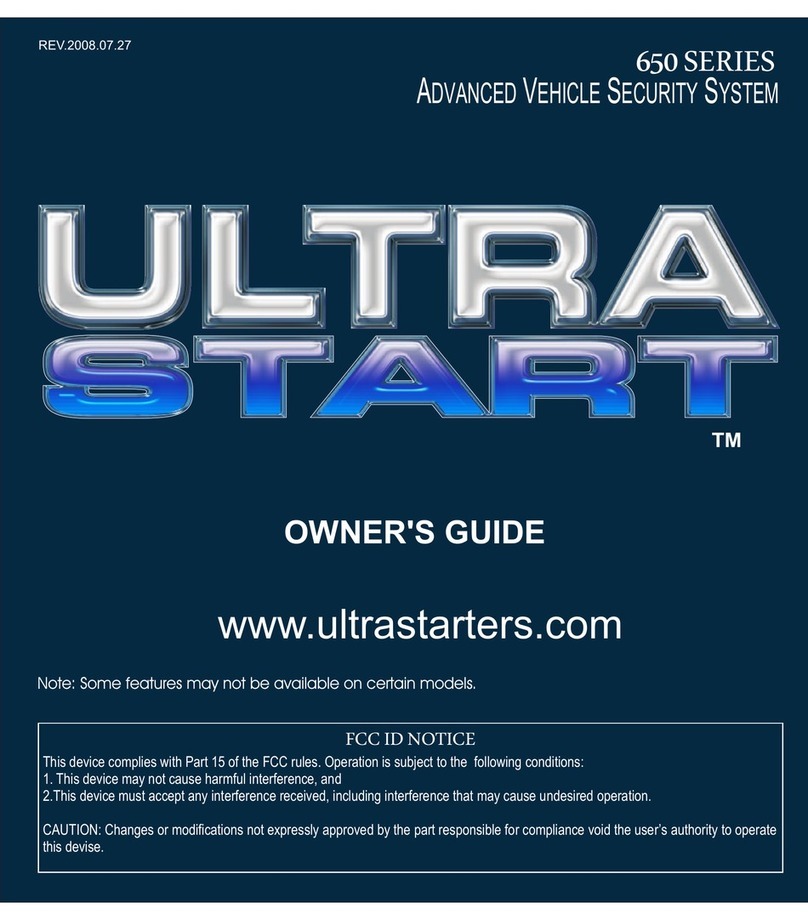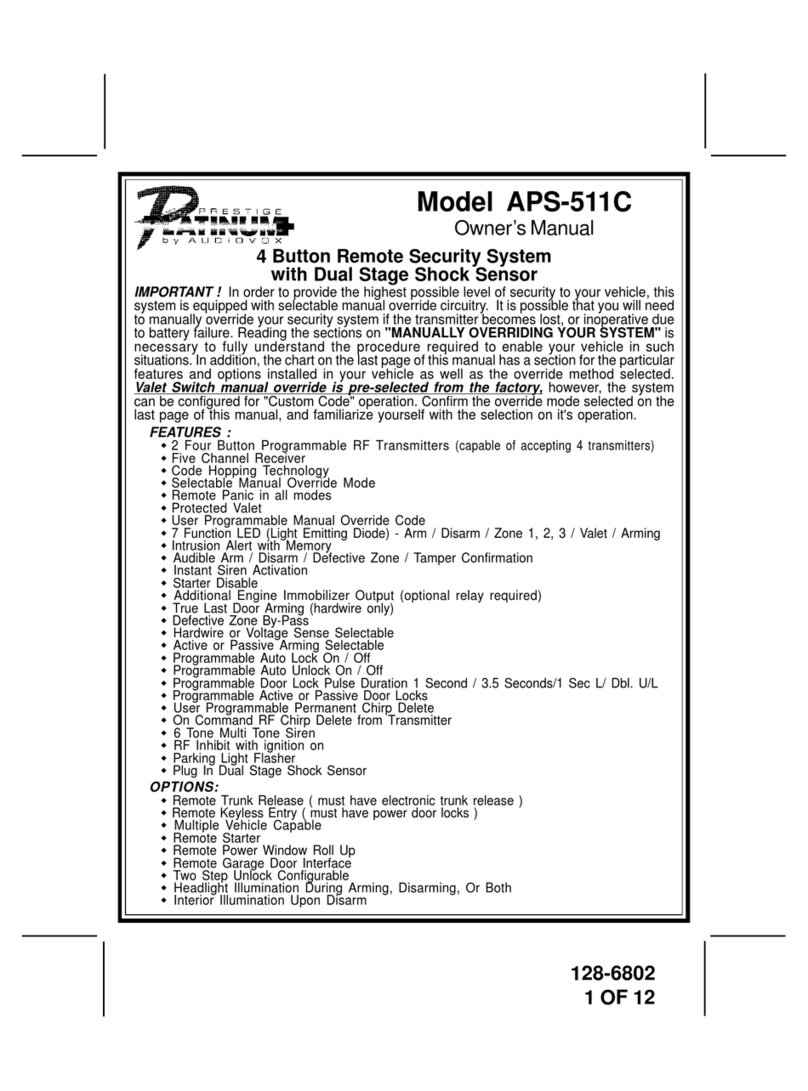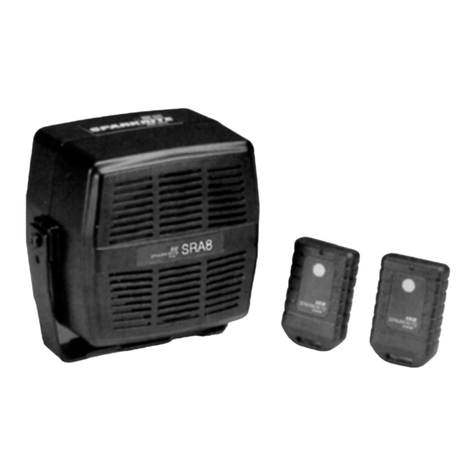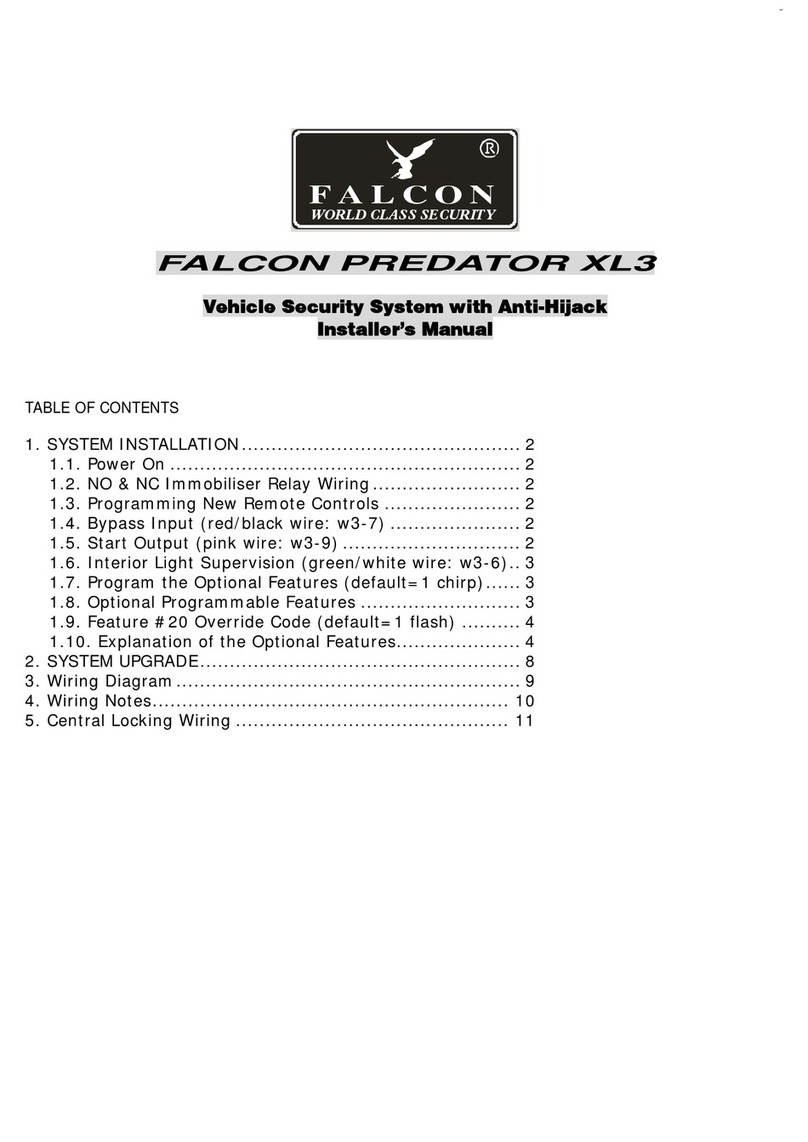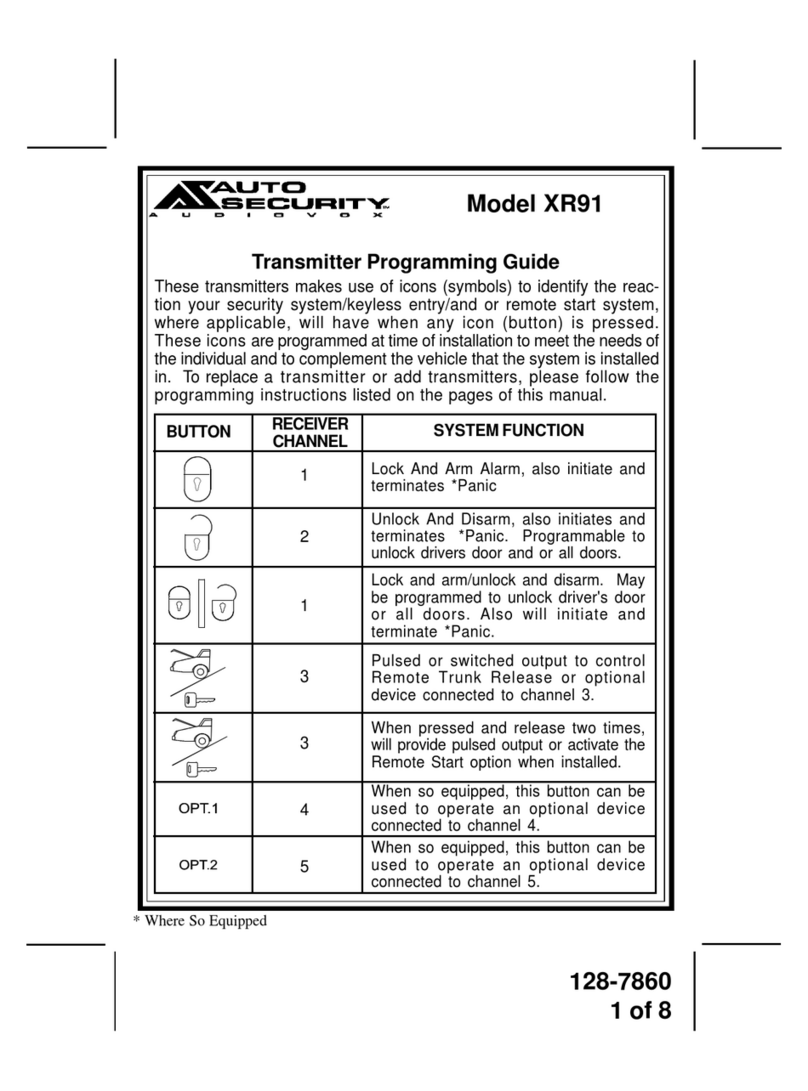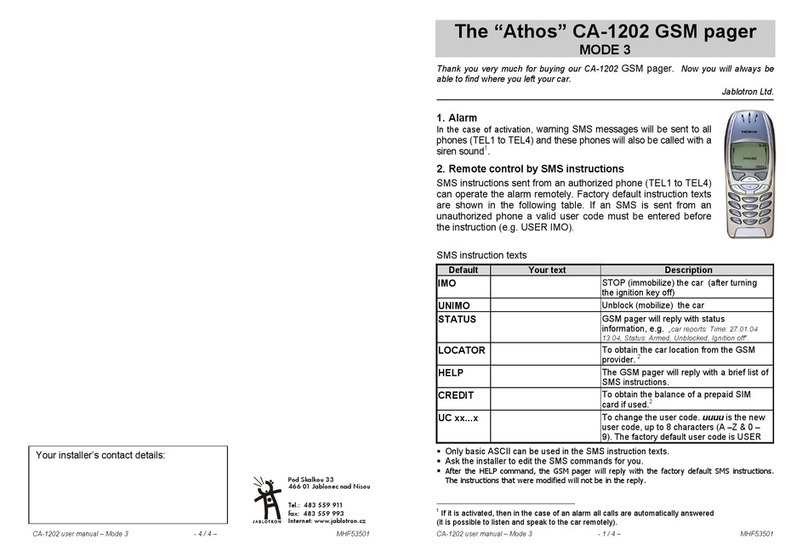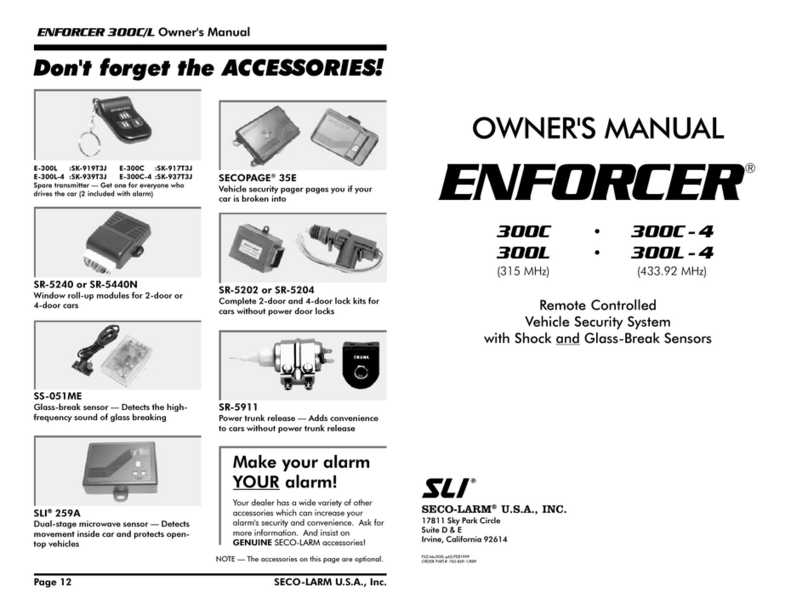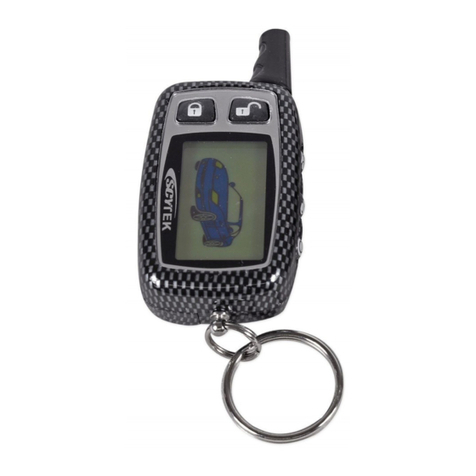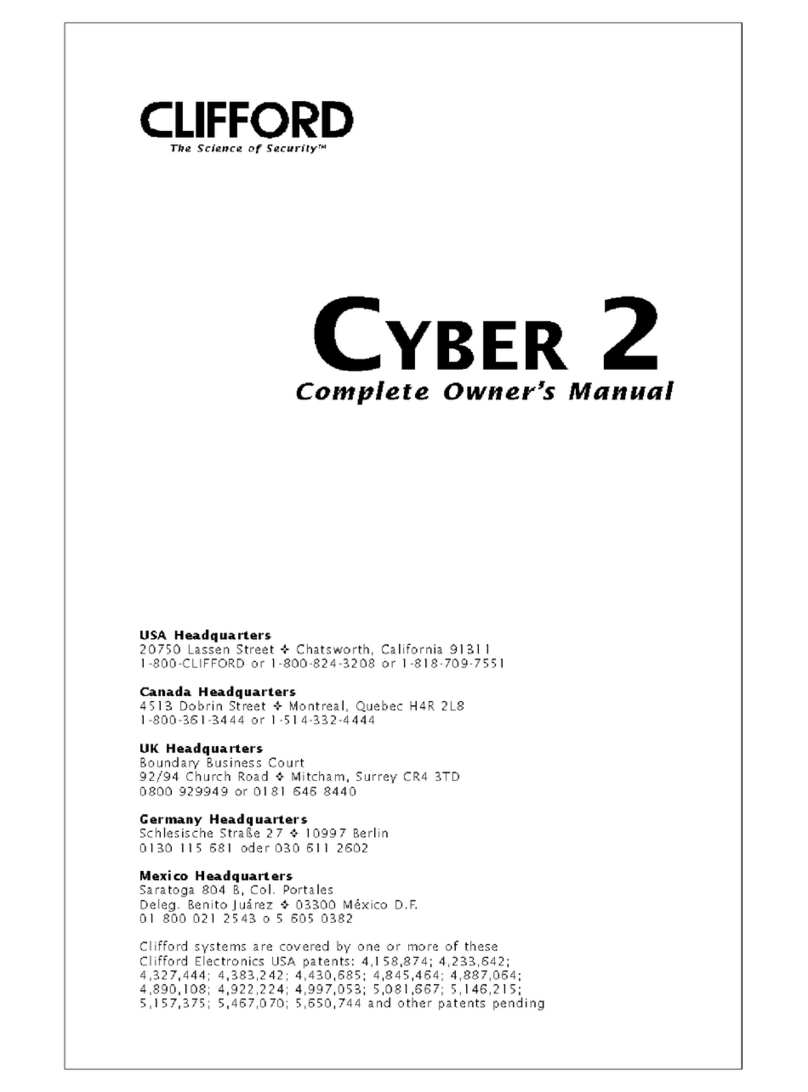1. DS512 OPERATING PRINCIPLE
The DS512 is a device, that combines function of a complete Vehicle Security System (VSS)
and the SMS pager.
The general purpose of DS512 is to notify up to 3 mobile phone numbers with SMS
information containing status of vehicle and status of equipped security system.
The DS512, can be equipped with external GPS receiver. This allows to receive vehicle
geographical position in the form of latitude and longitude. SMS notification also includes
a link to online maps, which can be opened in any web browser to visualise vehicle position.
The localisation of the vehicle is set only when the alarm is triggered or if the dedicated SMS
command protected by individual VSS PIN is sent to the VSS (see user manual).
The DS512 can work without alarm function (VSS) - without optical and acoustic signalisation
of alarming. The device works as a SMS pager that monitors third party VSS, already
installed in the vehicle.
The 4 modes of DS512 operation are described below:
DS512 operating modes:
Mode 4 - FULL ALARM - complete CAN-bus VSS with audible and visible signalisation.
DS512 is the complete vehicle security system, controlled by OEM remote or Tytan remotes,
integrated with the vehicle via CAN bus.
In this mode the DS512 monitors the doors, trunk, bonnet and optional additional sensors
or OEM alarm system. When the device is triggered the acoustic (siren) and visible (hazard
lights) signalisation is started and a SMS notification is being sent. Moreover, triggering
of OEM alarm (for example by OEM internal movement sensor) also triggers the DS512. The
door, bonnet, trunk, ignition and remote control signals are read from CAN bus (in some cars
bonnet and trunk can-bus signals may not be available). Siren output is negative. The hazard
lights negative output can control the hazard lights switch (perimeter connection) or can
control the relays of analogue connections to hazard lights bulbs. The immobilisation NC
relay is controlled by negative output. The vehicle is immobilised when the VSS is armed and
the ignition is switched on.
The DS512 can be equipped with optional RF module (radio frequency module),
which allows to control the VSS with additional Tytan remote transmitters. The
receiver module has 2 outputs, for analogue control of central door locking (if Tytan
remote transmitter is used) and for analogue power windows control (any remote
transmitter is used).
The proper wiring diagram is diagram 1.
Mode 3 - SILENT ALARM - CAN VSS without audible and visible signalisation.
The DS512 operates as in mode 4, but the audible and visible signalisation is disabled. The
engine immobilisation operates as in mode 4. The appropriate wiring diagram is diagram
1, but without siren and hazard lights connection.
Mode 2 - OEM CAN-bus VSS PAGER
The DS512 works as a Pager, monitoring OEM VSS via CAN bus. Detection of alarming
in the monitored VSS causes the DS512 to page up to 3 users with a SMS about alarming.
There is no audible nor visible signalisation in this mode. The device does not react
on opening the door or switching on the ignition as long as it does not trigger the OEM alarm.
The proper wiring diagram is diagram 2.
